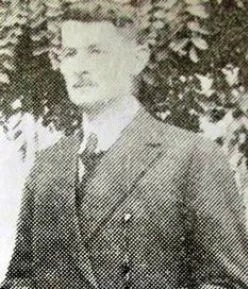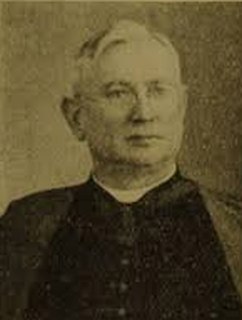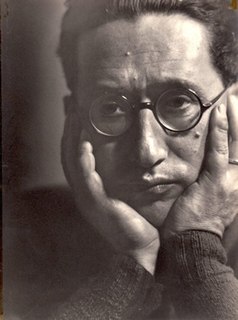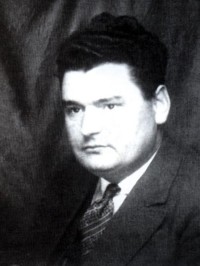 W
WAart Hendrik Alblas, aka Klaas de Waard, was a Dutch navy officer, resistance member and Engelandvaarder. He participated in several resistance operations and is one of the most highly decorated Dutch resistance members.
 W
WOtakar Batlička was a Czech adventurer, journalist, ham (amateur) radio operator, and member of the Czech-based Nazi resistance group Obrana Národa during World War II.
 W
WMarcel Callo was a French Roman Catholic from Rennes who served in Catholic organizations – in particular the Young Christian Workers (Jocists) – devoted to charitable works to the poor and to communities in general. Callo served as an apprentice at a print store from the age of thirteen before joining Catholic associations in France. He was conscripted to serve during World War II and the Gestapo arrested him in 1944 for his Christian activities. He died in the camps after being forced to do long hours of labour.
 W
WJózef Cebula was a Polish priest of the Missionary Oblates of Mary Immaculate (OMI).
 W
WCornelis Compter was a Dutch weightlifter. He competed in the men's featherweight event at the 1928 Summer Olympics. He was killed in the Mauthausen-Gusen Concentration Camp during World War II.
 W
WSvetolik Dragačevac was a retired Serbian law enforcement official who sent a threatening typewritten letter to German dictator Adolf Hitler on the eve of the Axis invasion of Yugoslavia in late March 1941.
 W
WWitold Józef Dzierżykraj-Morawski (1895—1944) was a Polish military commander, diplomat and a Colonel of the Polish Army.
 W
WStefan Filipkiewicz pronounced [ˈstɛfan filipˈkʲɛvit͡ʂ] was a Polish painter and designer, notable for his landscapes inspired by the Young Poland movement. He was a leading representative of the Polish art nouveau style of painting.
 W
WOszkár Gerde was a Hungarian sabre fencer who won team gold medals at the 1908 and 1912 Olympics. After finishing his active career he judged international fencing competitions and worked as a medical doctor. Being a Jew, he was deported from Hungary in 1944, and killed in 1944 at the Mauthausen-Gusen Concentration Camp in Austria. In 1989 he was inducted into the International Jewish Sports Hall of Fame.
 W
WErnő Grünbaum was a Transylvanian-Hungarian painter, graphic artist, lithographer and illustrator. He worked in a variety of styles, including Art Nouveau, Expressionism and Cubism.
 W
WKarel Hašler was a Czech songwriter, actor, lyricist, film and theatre director, composer, writer, dramatist, screenwriter and cabaretier. He was murdered in the Mauthausen concentration camp.
 W
WOtto Hirsch was a German and Jewish jurist and politician during the Weimar Republic. He was born in Stuttgart, Germany and died in Mauthausen concentration camp.
 W
WDmitry Mikhaylovich Karbyshev was an officer of the Russian Imperial Army, a Red Army general, professor of the Soviet General Staff Academy, and Hero of the Soviet Union (posthumously).
 W
WAlexander Katan was a Dutch Jewish physically disabled accountant, translator, and teacher, who was murdered by the Nazis in The Holocaust, after which time his photographs were notoriously on display in various museums.
 W
WAnna Čalounová-Letenská was a Czech theatre and film actress. During the 1930s and 40s, she appeared in twenty-five films. She was murdered in the Nazi concentration camp of Mauthausen.
 W
WAugustyn Łukosz was a Polish national activist and socialist politician from the region of Zaolzie, Czechoslovakia. He was a member of the Polish Socialist Workers Party, the social democratic party active amongst the Polish minority in interbellum Czechoslovakia. In 1935 Łukosz founded the Polish Social Democratic Party (PPSD).
 W
WAlfred Gottfried Ochshorn was a Jewish Austrian communist student activist and fighter during the Spanish Civil War. At the end of the Spanish Republic he went to France where he worked as a translator for German troops while also active in forging papers to aid the French Resistance. After being betrayed by an informant, he was arrested in 1943 by the Gestapo and sent to the Mauthausen concentration camp. He died after being shot by a guard, Martin Bartesch, during an escape attempt.
 W
WJean Origer was a Luxembourgish cleric and director of the newspaper Luxemburger Wort. Jean Origer was born in Esch-Alzette and later became a member of the Chamber of Deputies of Luxembourg. During World War II, He was interned in the Mauthausen concentration camp where he died. A street in his hometown of Esch-Alzette is named after him.
 W
WWiktor Ormicki was a Polish geographer and cartographer, and a university professor. He was of Jewish descent. A specialist in economical geography and demography, he served at various posts in the Jagiellonian University, Wolna Wszechnica, Higher Trade School of Kraków and Lwów University. Arrested by the Germans during World War II in Sonderaktion Krakau, he was murdered in the Mauthausen-Gusen concentration camp.
 W
WGiuseppe Pagano was an Italian architect, notable for his involvement in the movement of rationalist architecture in Italy up to the end of the Second World War. He designed exhibitions, furniture and interiors and was an amateur photographer. He was also a long-time editor of the magazine Casabella.
 W
WFrantišek Pecháček was a Czech gymnast who competed for Czechoslovakia in the 1920 Summer Olympics. He was born in Záhornice near Městec Králové and was murdered in Mauthausen-Gusen concentration camp.
 W
WAvgust Pirjevec was a Slovene literary scholar, lexicographer, and librarian.
 W
WKazimierz Prószyński, born in Warsaw, Poland, was a Polish inventor active in the field of cinema. He patented his first film camera, called Pleograph, before the Lumière brothers, and later went on to improve the cinema projector for the Gaumont company, as well as invent the widely used hand-held Aeroscope camera.
 W
WHenryk Sławik was a Polish politician in the interwar period, social worker, activist, and diplomat, who during World War II helped save over 30,000 Polish refugees, including 5,000 Polish Jews in Budapest, Hungary by giving them false Polish passports with Catholic designation. He was executed with some of his fellow Polish activists on order of Reichsführer SS in concentration camp Gusen on 23 August 1944.
 W
WKarol Śliwka was a Polish communist politician from Zaolzie region in the First Czechoslovak Republic. Śliwka was one of the most prominent political leaders of the Polish minority in Zaolzie and a member of National Assembly of the Czechoslovak Republic from 1925 to 1938.
 W
WEmil Starkenstein was a Czech-Jewish pharmacologist and one of the founders of clinical pharmacology. He was killed in the Mauthausen-Gusen concentration camp along with a few hundred refugees from Amsterdam after an incident in which a Dutch Jew resisted a Nazi patrol.
 W
WRudolf Tayerlé (1877–1942) was a Czechoslovak Social Democratic politician and trade union leader. In 1922 he was instrumental in expelling the communists from the Odborové sdružení českoslovanské. In 1942 he was elected vice-president of the International Federation of Trade Unions. Tayerlé was arrested shortly after the German invasion of Czechoslovakia. He died in the Mauthausen-Gusen concentration camp.
 W
WNikolai Ivanovich Vlasov was a flying ace, lieutenant colonel of the Soviet Air Forces, and a Hero of the Soviet Union. On 29 July 1943 his Yak-1 fighter was shot down over Leningrad by anti-aircraft fire from the ground. After being taken captive he led underground resistance efforts in the various concentration camps he was held in and managed to make multiple escape attempts. After one escape attempt he was sent to Mauthausen where he made preparations for a prisoner uprising. However, he did not live to participate in the prison revolt as he had been betrayed by another prisoner and held under close watch of the SS. After being tortured by the SS he was thrown alive into a crematorium furnace on 26 January 1945 as Allied troops were approaching the area. Several of his fellow prisoners went on with the uprising after his death, hence on 3 February 1945 roughly 500 prisoners from his block broke through a fence and escaped.